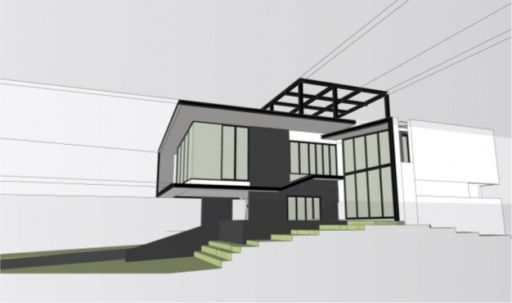When AutoCAD was introduced in 1982, it marked a significant milestone in the field of computer-aided design (CAD). AutoCAD served as a versatile CAD software with drafting and design capabilities tailored for various industries. Following the overwhelming success of the software, specialized AutoCAD programs were developed for different industries over time. While AutoCAD finds extensive use in mechanical and electrical engineering, it is particularly renowned and widely used in the fields of civil engineering and architecture..
Entry of Revit Architecture:
But as the concept of building information modeling (BIM) started making inroads in civil engineering and architecture, Revit Architecture entered the picture in 2000. It became an instant hit in architectural design. Currently Revit is utilized not only in architectural design but also in structural engineering and MEP (mechanical, electrical, and plumbing) design.
AutoCAD versus Revit Architecture:
AutoCAD and Revit Architecture have many similarities. They both support the creation of 2D and 3D designs. Both offer tools for producing construction documentation and incorporating annotations into drawings. They are capable of creating detailed plans, sections, elevations, and schedules. Additionally, both software solutions come equipped with libraries containing predefined objects like furniture, fixtures, doors, windows, and more. As they are the products of the same company, they both have a similar-looking interface and navigation design.
Indeed, AutoCAD and Autodesk Revit are distinct software solutions with unique features, capabilities, and purposes. Comparing them directly is not straightforward due to their differing functionalities and intended uses. Specifically, AutoCAD follows a traditional CAD approach, where users create 2D and 3D geometry using basic drafting and modelling tools. It has limited BIM capabilities. Conversely, Revit Architecture adopts a Building Information Modeling (BIM) approach, prioritizing the creation of intelligent, parametric building elements. Revit stands out in 3D modeling and offers advanced parametric modeling capabilities
Among users, there is an unspoken consensus: While AutoCAD may serve specific tasks or disciplines within civil engineering or architecture projects, Revit Architecture excels in comprehensive architectural design and BIM coordination.
If you are an architect or associated with an architectural firm and you require intelligent 3D modelling, then learning Revit Architecture can be invaluable. With Revit you can also facilitate collaboration with engineers, contractors, and other stakeholders involved in the design and construction process.
Revit Architecture Training
Enrolling in a formal learning environment can accelerate your mastery of Revit Architecture. The focus areas for your learning should be related to:
User Interface:
Familiarize yourself with the Revit Architecture interface, including the Ribbon, Quick Access Toolbar, Project Browser, Properties Palette, and View Controls. Know how to navigate and access various other tools.
Project Setup:
Learn how to set up a new project in Revit Architecture. This includes choosing suitable templates, establishing units, setting up levels, and generating views.
Building Elements:
Explore the creation and modification of building elements such as walls, floors, roofs, doors, windows, stairs, and ramps. Learn how to modify their properties, add layers, and create openings.
BIM:
Gain knowledge of BIM concepts and how Revit Architecture implements them. Understand the benefits of BIM, which include data-rich modeling, parametric relationships, and automatic coordination.
Views and Sheets:
Learn how to create and manage different views, such as floor plans, elevations, sections, and 3D views. Explore the process of creating and customizing sheets for construction documentation.
Annotation and Detailing:
Explore the tools for adding annotations, dimensions, tags, and schedules to your Revit Architecture project. Learn how to produce and handle detail views and detail components.
Families:
Familiarize yourself with families in Revit Architecture. They are parametric building elements. also, learn how to create custom families and modify existing ones to suit project requirements.
Collaboration and Worksharing:
Understand the collaboration features in Revit Architecture. Explore features like worksharing, model linking and importing, and coordination tools.
Visualization and Rendering:
Acquire skills in producing realistic visualizations of designs using Revit’s rendering capabilities. Understand materials, lighting, camera views, and rendering settings to enhance your presentation outputs.
Documentation and Construction Drawings:
Acquire expertise in the tools and techniques for generating construction documentation from your Revit Architecture model. This includes creating plan views, sections, schedules, and keynoting.
Revit Architecture is constantly evolving. You can explore more advanced features, such as advanced modeling techniques, phasing, family creation, and advanced scheduling.
Revit Architecture Training at CADD Centre
CADD Centre provides an extensive selection of Revit courses. We focus on ‘experiential learning,’ which involves small-scale sample projects and, in some cases, real-world projects for you to practice various tools and features of Revit Architecture during your training. Feel free to explore our courses here or drop by the nearest CADD Centre for more information.
Conclusion:
In conclusion, the transition from AutoCAD to Revit Architecture represents a pivotal shift in design and engineering. While AutoCAD is effective for specific tasks, Revit excels with its robust Building Information Modeling (BIM) capabilities, offering advanced 3D modeling and improved collaboration. Mastering Revit is essential for professionals aiming to thrive in today’s architectural landscape.
Enrolling in Revit Architecture training at CADD Centre equips you with hands-on skills and practical experience, preparing you for real-world challenges. Explore our courses today and advance your career in architectural design.
FAQs
Why is Revit Architecture preferred in architectural design over AutoCAD?
Revit Architecture is preferred due to its robust BIM features, allowing for intelligent modeling, improved collaboration, and parametric design. These features make Revit more effective for comprehensive architectural design, project coordination, and managing complex building data compared to AutoCAD.
Can AutoCAD and Revit Architecture be used together in projects?
Yes, both software solutions can be used in the same project. AutoCAD may be used for specific tasks like drafting, while Revit Architecture handles the BIM-based 3D modeling and collaboration aspects. Their similar interfaces also make it easier for users to switch between them.
What are families in Revit Architecture?
Families in Revit Architecture refer to parametric building components, such as doors, windows, and furniture. You can create custom families or modify existing ones to meet specific project requirements, offering flexibility in design.
What are the benefits of enrolling in Revit Architecture training at CADD Centre?
CADD Centre offers hands-on Revit Architecture training, focusing on experiential learning with sample and real-world projects. The training covers essential tools, BIM concepts, 3D modeling, collaboration, and construction documentation to prepare you for architectural design challenges
Which course is better for beginners: AutoCAD or Revit Architecture?
Both AutoCAD course and Revit Architecture courses can be taken by beginners, but it depends on your career goals. AutoCAD is often recommended for beginners in general drafting or mechanical design, while Revit is ideal for those focused on architecture and building design





